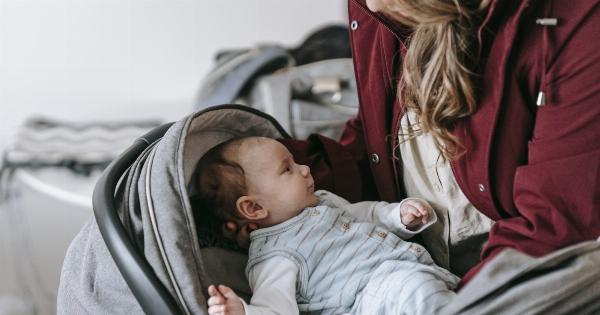Sleeping on the stomach is a common position adopted by many people, including infants. However, medical professionals strongly advise against placing infants to sleep on their stomachs due to the potential risks involved.
This article aims to explore why sleeping on the stomach is considered a risk for infants and shed light on the importance of safe sleeping practices for babies.
1. Increased Risk of Sudden Infant Death Syndrome (SIDS)
One of the major concerns associated with sleeping on the stomach is the increased risk of Sudden Infant Death Syndrome (SIDS). SIDS is the sudden and unexplained death of an infant under one year of age.
Research has consistently shown a clear correlation between sleeping on the stomach and SIDS, making it crucial for parents to be aware of this risk.
2. Impaired Breathing
Sleeping on the stomach can compress the baby’s airways and restrict the flow of oxygen, causing difficulty in breathing.
Infants have weaker neck muscles and are unable to move their heads to clear the airway obstruction, unlike adults or older children. This can lead to a decrease in oxygen levels in the blood and increase the risk of suffocation or asphyxiation.
3. Increased Body Heat Retention
Another reason why sleeping on the stomach is considered a risk for infants is the potential for increased body heat retention. When lying face down, the baby’s face is closer to the mattress, which can trap heat and lead to overheating.
Overheating is associated with an increased risk of SIDS. Therefore, it is essential to ensure adequate air circulation around the baby’s sleeping area and maintain a comfortable sleep environment.
4. Inability to Self-Rescue
Infants placed on their stomachs during sleep are unable to roll over or change their sleeping position independently.
This lack of mobility can be particularly dangerous if the baby’s face becomes pressed against the bedding or mattress, as they may not have the ability to move away or free themselves. This increases the risk of suffocation and highlights the importance of vigilance and safe sleeping practices.
5. Delayed Motor Development
Regularly sleeping on the stomach may also contribute to delayed motor development in infants.
By spending extended periods facing down, babies miss out on opportunities for strengthening their neck and back muscles, as well as developing their gross motor skills. It is important to ensure that babies have ample tummy time during supervised awake periods to aid in their motor skill development.
6. Back-Sleeping Recommendations
Given the risks associated with stomach sleeping, it is no surprise that medical professionals and organizations advocate for back-sleeping as the safest position for infants.
The American Academy of Pediatrics (AAP) strongly recommends placing babies to sleep on their backs to minimize the risk of SIDS. Back-sleeping allows for unobstructed breathing and reduces the likelihood of suffocation or overheating.
7. Safe Sleeping Practices
While back-sleeping is encouraged, it is also important to follow safe sleeping practices to further reduce the risk of SIDS and other sleep-related incidents. Some of these practices include:.
8. Providing a Firm Sleep Surface
Infants should be placed on a firm mattress or crib that meets safety standards. Soft surfaces such as adult beds, couches, or cushions pose a higher risk of suffocation or entrapment.
9. Avoiding Loose Bedding and Objects in the Crib
Loose bedding, pillows, stuffed animals, and other objects in the crib can pose suffocation hazards. It is important to keep the sleeping area free from any potential obstructions.
10. Dressing the Baby Appropriately
Overdressing or using heavy blankets can cause overheating. Dressing the baby in appropriate sleepwear and using lightweight blankets, if needed, can help regulate body temperature.
Conclusion
While it may be tempting to place an infant on their stomach to sleep, the risks associated with this position are significant. Sleeping on the stomach increases the risk of SIDS, impairs breathing, and may lead to overheating.
Infants are also unable to self-rescue or change their position when faced with an obstruction. Therefore, it is crucial to follow safe sleeping practices, such as placing babies on their backs in a safe sleep environment.
By prioritizing the safety of our infants during sleep, we can minimize the risk of sleep-related incidents and ensure their well-being.





























